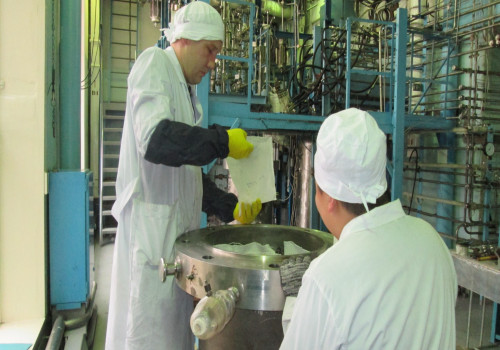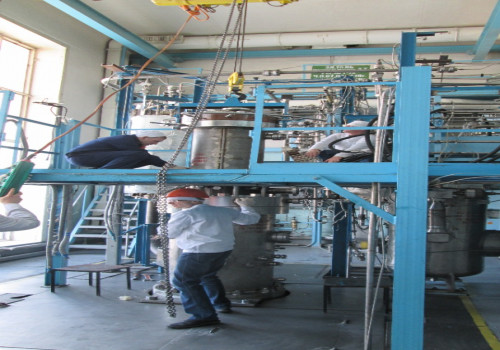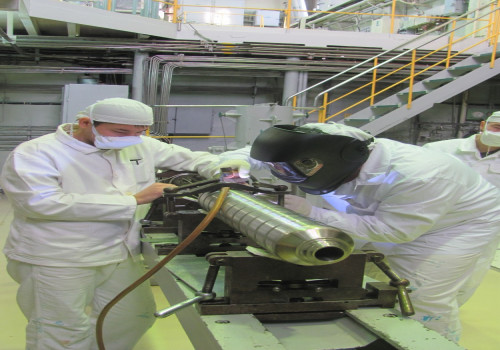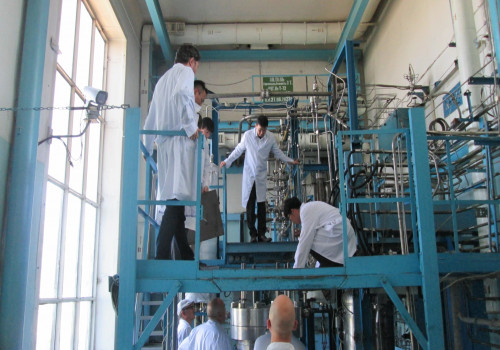Research Efforts to support the safety of project concerning Japanese Sodium-Cooled Fast Reactor (EAGLE)
06 May 2022




Project # 3. Within the period of 1995–2022. Research Efforts to support the safety of project concerning Japanese Sodium-Cooled Fast Reactor (EAGLE)
A major activity of the National Nuclear Center of the Republic of Kazakhstan is research in the field of nuclear power development aimed at providing the safety of Japanese Sodium Fast Reactor SFR (Sodium Fast Reactor). Throughout the history of activity, NNC RK has implemented a number of projects, and one of the largest was the EAGLE (Experimental Acquisition of Generalized Logic to Eliminate Re-Criticalities) project, implemented since 1998 together with Japanese organizations.
SFR reactor aims to perform a wide range of tasks in the power industry of the near future with a closed fuel cycle. One of the innovative features of its design is the use of a core melt ejection system that ensures the prevention of re-criticality in emergency situation. For this purpose, steel channels are installed each FAIDUS type (Fuel Assembly with In-Duct Structure) FA to ensure the migration of melting part beyond the core. Melt splitting for parts reduces re-criticality probability. Besides, with further development of the accident, the part of newly formed melt mass can be migrated through the pipelines of reactor control rods.
The EAGLE project is aimed at studying the operability of systems for the melts migration during an accident. From the very beginning of the project work, it was clear to both parties that comprehensive studies of the processes accompanying the accident were required to obtain reliable results. Some of these studies were performed in out-of-pile reactor experiments, reactor experiments are necessary to obtain an overall picture.
EAGLE project was implemented in stages:
The period of 1996–2006 – Project EAGLE-1. Experimental studies to confirm the feasibility of the concept of controlled molten fuel migration from the core through the inner tube installed in the FA to the lower plenum of a fast reactor with sodium coolant (in-pile reactor and out-of-pile reactor experiments).
The period of 2007–2012 – Conduction of in-pile reactor studies of possible core melt migration upward. Conduction of out-of-pile reactor experiments to study melt fragmentation in a sodium pool.
2014 – Project post-EAGLE-2. Conduction of EAGLE-3 project technical feasibility.
Conduction of post-experimental material testing studies of experimental devices tested in programs EAGLE-1 and EAGLE-2.
The period of 2015–2022 – Project EAGLE-3. Studies of a possible fuel migration through control rod guide tubes; studying processes of melt cooling in the presence of residual energy release at limited amount of the cooling sodium.
All stages of the project have been successfully implemented including the completion of all out-of-pile reactor experimental studies specified by EAGLE-3 project.
As a result of the experiments performed, the dependence of melting time of inner tube from its thickness, the rate of melt migration along this tube were determined, and the possibility of melt migration into the cavity under the reactor core was confirmed. In addition, experimental data on physical and chemical composition of the melt after its interaction with liquid sodium were obtained.
An important part of all the work was the studies conducted after the main both in-pile and out-of-pile reactor experiments. Most of the post-experimental studies are conducted at RRC Baikal-1 that is equipped with a radiation protection chamber. The results of the first part of EAGLE project allowed us to determine the rational course of subsequent studies. In the out-of-pile reactor part, the processes of melt jet decay at the outlet of the discharge tube and melt fragmentation in the trap were studied; in in-pile reactor research the integral demonstration experiments were conducted, in which the possibility of removing the core material melt into the cavity above the reactor core through a channel filled with liquid sodium was shown. Two identical experiments were conducted to determine the value of heat flow from the molten steel through the steel wall of the channel filled with liquid sodium. The difference of initial data in these experiments provides high reliability of the overall result. The third part of the experimental program includes three reactor experiments. The main focus is on studies of the possibility of melt discharge through the control rod guide tube, and studies of the final phase of a severe accident with relocation of core materials to an area with a limited amount of coolant and its cooling in the presence of residual energy release in the melt. To the present time, two reactor experiments have been conducted.
Today the assembly of experimental device was finished at RRC IGR and the preparations for the final reactor experiment to study the movement of molten core materials along a guide tube equipped with a control rod damper are underway.
Latest news by category:
-
Long-Overdue Recognition
31 December 2025
-
Congratulations on Receiving a Prestigious Award!
31 December 2025
-
Strengthening Transparency Principles
30 December 2025
-
Participation in IAEA International Fusion Research Council Meeting on Controlled Thermonuclear Fusion
25 December 2025